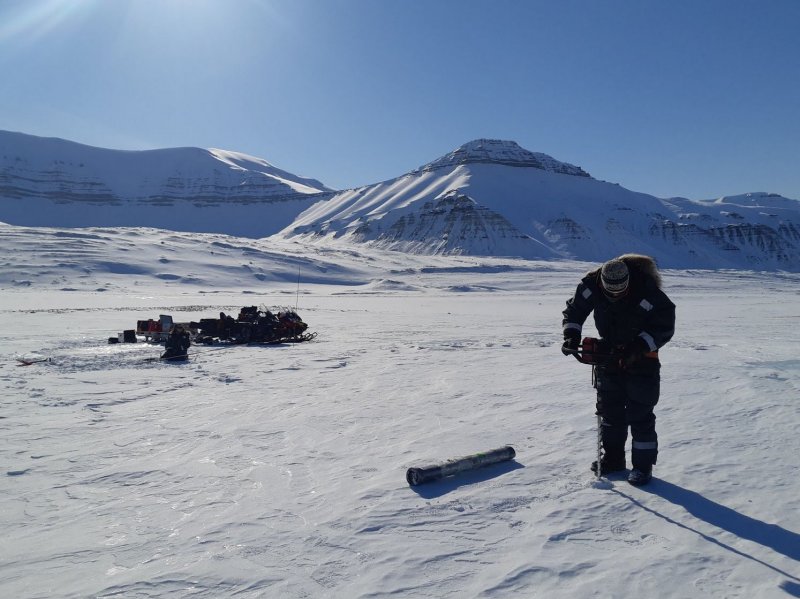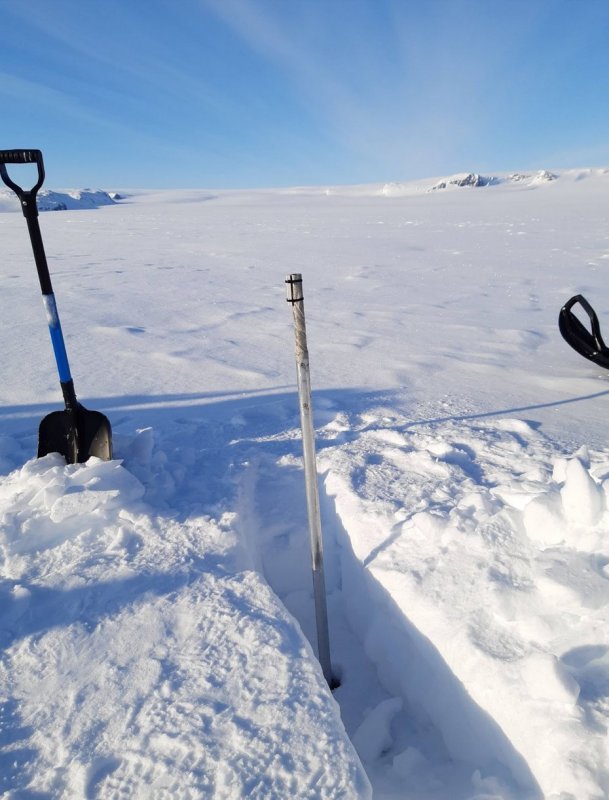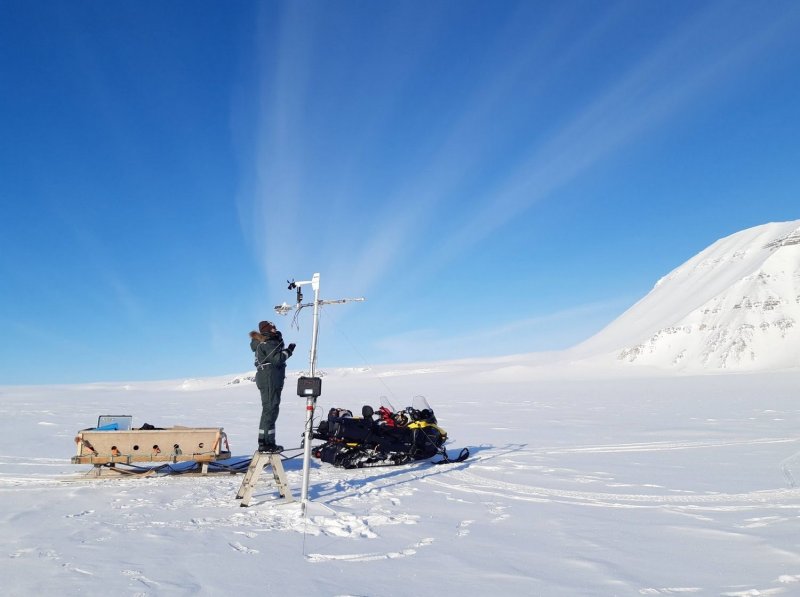Coperation in the Arctic: How a two-day field trip can rescue a long-term series of measurements at stake due to the COVID pandemic.
Due to the current COVID-19 situation not all scientists can come up to Svalbard to do their yearly field campaigns. SIOS & UNIS joined forces to help out a mass balance monitoring project on Nordenskioldbreen and Lomonosovfonna that is normally done by researchers from Uppsala University and University of Utrecht. Two master students, Amélie Roche (UNIS, UiT) and Marjolein Gevers (UNIS, UiO), and the technician Audun Tholfsen from UNIS went out for a two day field campaign on Nordenskiöldbreen and Lomonosovfonna to do mass balance measurements.
Mass balance is the net sum of snow accumulation and ice loss through ablation over some specified time period and allows the establishment of a sort of health status of a glacier. Mass balance is a good indicator of the impact of climate change on glaciers since both accumulation and ablation are related to climate. The mass balance on Nordenskiölbreen / Lomonosovfonna has been monitored since 2006 with 9 stakes currently distributed over the whole glacier.
The team went out for two days to find last years’ stakes, measure them and install new stakes, staying at the hotel in Pyramiden between the two days.

Audun drilling a new stake in the ablation zone of Nordenskioldbreen while Amélie is retrieving last years’ stake. (photo: Marjolein Gevers)

Just drilled ablation stakes with RECCO finder (to find it back next year) on top. (photo: Amélie Roche)

Marjolein replacing the weather station at Nordenskioldbreen. The weather station has been running since March 2009 and live data can be found here (photo: Amélie Roche)



























